Table of Contents
Luffa, known as Sigua {丝瓜} in Chinese, is the fruit of an annual vine climber plant. Matured luffa turns into a cylindrical sponge. For that reason, people also call them sponge gourd. Sigua is a super nutritious and tasty gourd, loaded with fiber, as well as essential minerals and vitamins. However, luffa has a tendency to turn black during cooking. Although it doesn’t affect the nutrition, it impacts the presentation. If you are searching for solutions on how to avoid luffa turning black during cooking, search no more. In this article, I’m going to share all the tips and tricks to accomplish that goal.
Luffa Fun Facts
Luffa is an annual vine climber that resembles the look of the cucumber plant. This is no surprise since Luffa is part of the cucumber family. Both plants have large green maple leaf looking leaves and bloom yellow flowers. Both bear cylindrical green fruits.
Sigua in Chinese literally translates as “Silk Gourd”, referring to the soft and slippery texture of the gourd meat. Precisely the reason some people also call Luffa Chinese Okra. They are very popular in China, especially in the Yangtze River Delta area, home to Huai Yang cuisine. A place I proudly call my hometown.
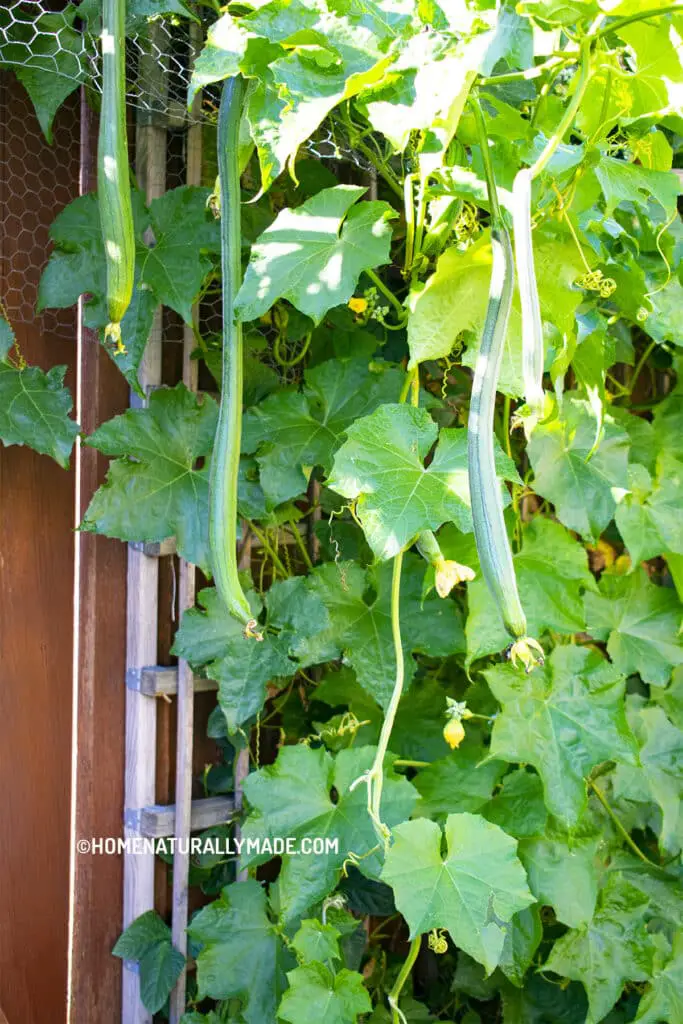
I still vividly recall my late grandma would grow Sigua in her front yard vegetable garden every year. Sigua is a tropical and subtropical vine, thriving in hot and humid environment. This makes Sigua a summer garden delight.
Chinese Sigua usually have perfect cylindrical shape with smooth, thinner skin. Other luffa has ridged cylindrical shape with thicker, rougher skin. People sometime call these Ridge Gourd. I noticed Ridge Gourd’s flower is pale yellow vs. Sigua’s golden yellow blossom.
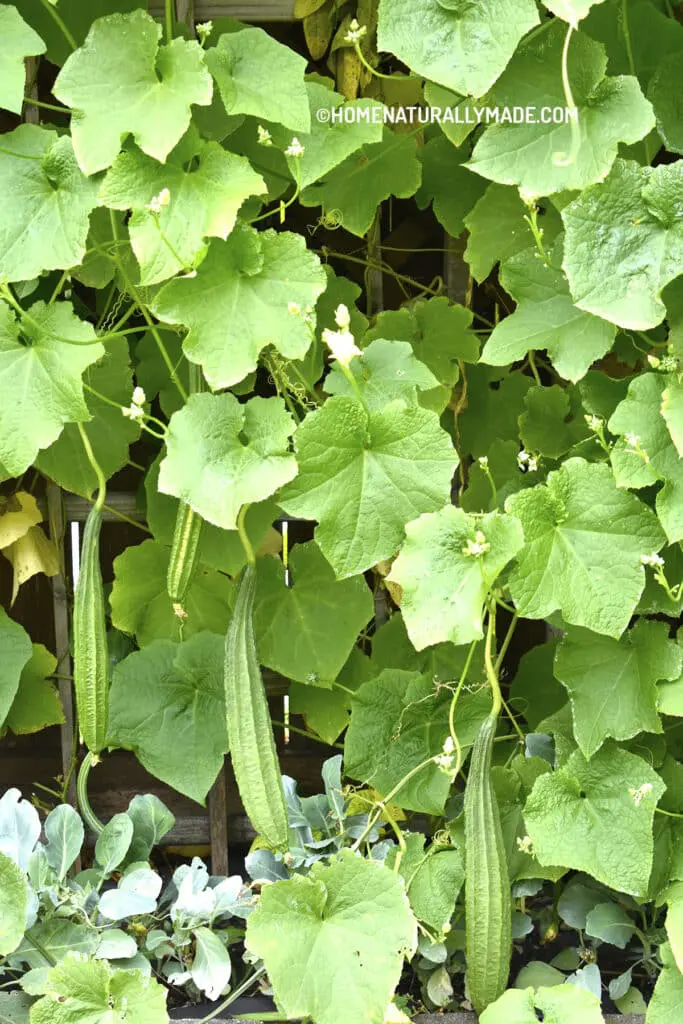
Why Luffa has a tendency to turn black during cooking?
First of all, Luffa contains starch. When exposed to the air, starch reacts to the oxygen and turns brown or black, a process called oxidization. This happens to potatoes all the time.
For this reason, freshness is the key for tasty luffa. The fresher the Luffa, the less likely they will turn black during cooking and tastier they are.
Also, the seeds of Luffa have black pigment which will make the luffa look black when encountering high temperature during cooking. Therefore, young tender luffa is less likely to turn black compared to more matured Luffa. This is because young Luffa barely has any seeds. As luffa matures, seeds start to develop and grow. The seeds initially is soft, whitish and ultimately grow into black hard shelled seeds.
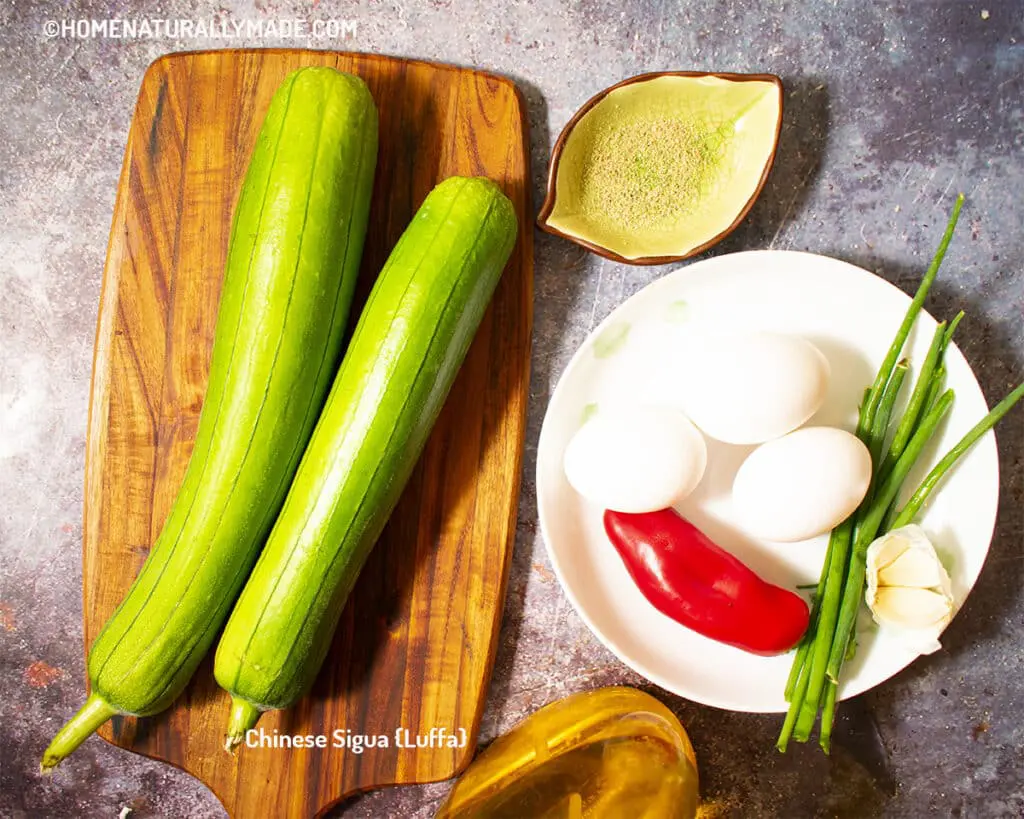
Besides, cold temperature will convert starch into sugar, a process usually referred to as “Cold Sweetening”. The extra sugar will make luffa appear black when encountering high temperature during cooking. Therefore Fall luffa is more likely to turn black during cooking compared to the Summer luffa.
Last but not least, the specific type of Luffa itself plays a huge role. I have grown Luffa I do not have to worry about this issue at all, and Luffa that is extremely vulnerable to turning black.
For instance, I found Ridge Gourd Luffa typically is less sensitive to this issue compared to Chinese Sigua, or the type of Luffa has thinner smoother skin.
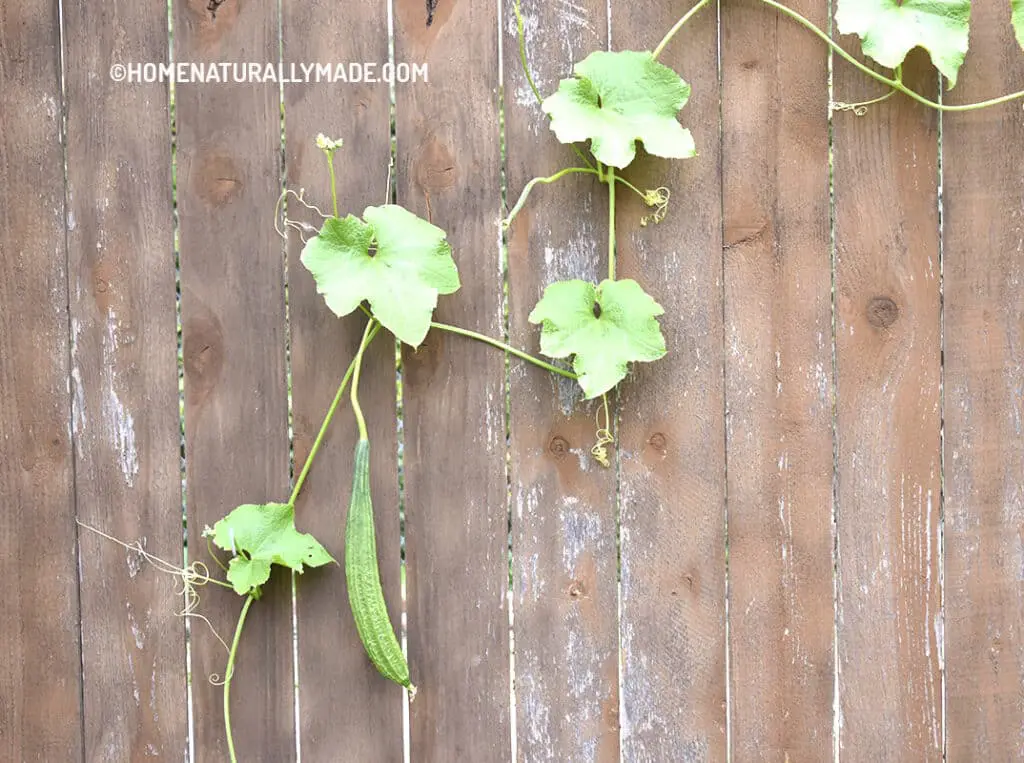
How to Avoid Luffa Turning Black During Cooking?
Tip No.1 is to soak the peeled and cut luffa in the water immediately to avoid Luffa turning black
Prepare the luffa right before you are ready to cook them. Fill a big washbasin with water and set aside. Peel the skin using a heavy duty peeler as luffa has much thicker, tougher skin. I use two types of peelers, the regular one is for peeling things such as potatoes or carrots that have a thin skin; the heavy duty one for peeling Luffa.
Cut the peeled luff either in diamond shape or slices, and immediately soak them in the big washbasin filled with water.
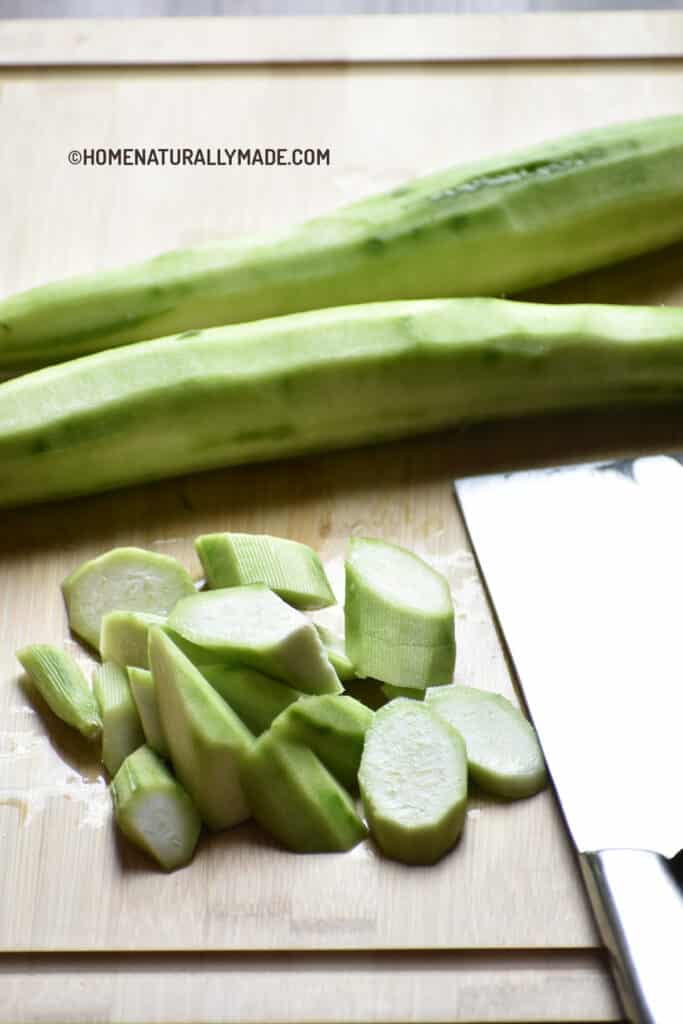
Tip No.2 is to marinate with salt to avoid Luffa turning black
Remove the luffa pieces from the washbasin, rinse a couple times under running water. Following that, add them into a mixing bowl with a pinch of salt. Mix well with a pair of wooden spatulas and let it sit for about 10 minutes.
After that, rinse the luffa thoroughly to get rid of excess salt and soak them in plenty of fresh water until you are ready to cook them.

Tip No.3 is do not overheat and over cook Luffa
The longer and the higher temperature used to cook Luffa, the darker they become. Luffa is truly an amazing, naturally delicious and easy to cook gourd. All you need is to cook the luffa using medium heat for about 3 minutes.
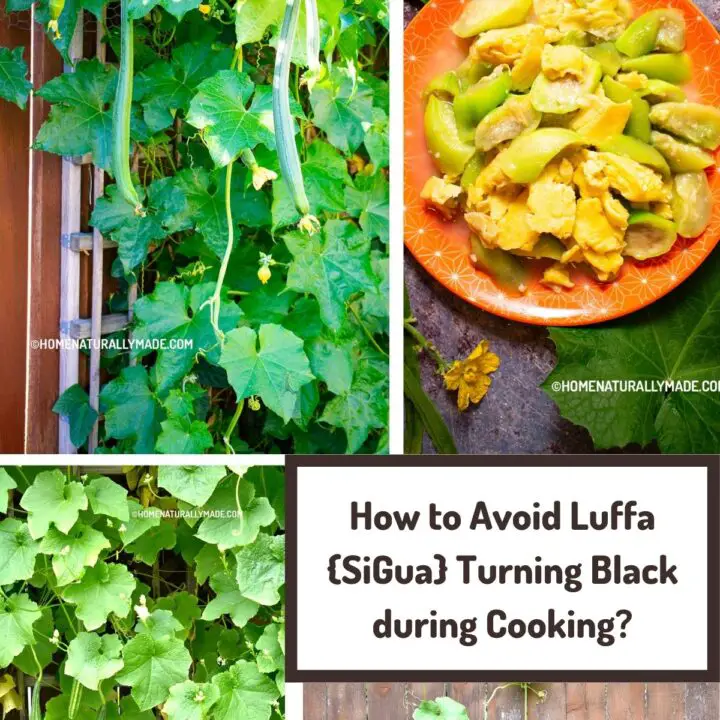
How to Avoid Luffa Turning Black During Cooking?
Luffa is a super nutritious and tasty gourd, loaded with fiber. However it has a tendancy of turning black during cooking. If you are searching for solutions on how to avoid this, search no more.
Materials
- 1 lb luffa, about 2 luffa
- 1 tsp Himalyan Pink Salt
Tools
- 1 large washbasin
- 1 large mixing bowl
- one pair of wooden spatulas
- 1 cutting board
- 1 chef's knife
- 1 heavy duty peeper
Instructions
- Prepare the luffa right before you are ready to cook them. Fill a big washbasin with water and set aside.
- Peel luffa using a heavy duty peeler and cut into either diamond shape or slices. As you cut the luffa, place them immediately into the big basin filled with water.
- Rinse the luffa pieces a couple times under the running water and then drain them using a stainless steel skimmer, and place them into a big mixing bowl.
- Add 1 tsp of Himalyan pink salt, mix well with the luffa pieces using a pair of wooden spatuals. Set aside for 10 minutes.
- Rinse the luffa under running water a couple times to get rid of the excess salt.
- Cook the luffa immediately using medium heat and cook in less than 5 minutes.
Notes
- Do these prep steps if you think you are cooking the type of luffa that is prone to turning black during cooking.
- By the way, Fall luffa is more likely to turn black compared to summer luffa. The fresher the luffa, the less likely they would turn black during the cooking.
Recommended Products
As an Amazon Associate, I earn a small amount of commission from the qualifying purchases.


